AMAZON multi-meters discounts AMAZON oscilloscope discounts
Quadrature signals are based on the notion of complex numbers. Perhaps no other topic causes more heartache for newcomers to DSP than these numbers and their strange terminology of j-operator, complex, analytic, imaginary, real, and orthogonal. If you're a little unsure of the physical meaning of complex numbers and the j = √- operator, don't feel bad because you're in good company. Sixteenth century Italian mathematician Girolamo Cardano de scribed an imaginary number "as subtle as it is useless." In the 17th century Gottfried Leibniz described imaginary numbers as being "amphibian, halfway between existence and nonexistence." (The term "imaginary" was first used by the brilliant mathematician/philosopher René Descartes in the 17th century, and was meant to be derogatory. That's because not only was the notion of the square root of a negative number dubious at best, surprisingly there was no consensus at that time as to the true meaning of negative real numbers.) Even Karl Gauss, one the world's greatest mathematicians, called the j-operator the "shadow of shadows." Here we'll shine some light on that shadow so you'll never have to call the Quadrature Psychic Hotline for help.
Quadrature signals, represented by complex numbers, are used in just about every field of science and engineering. [That's because complex sinusoids are solutions to those second order linear differential equations used to describe so much of nature.] Quadrature signals are of interest to us because they describe the effects of Fourier analysis as well as the quadrature processing and implementations that take place in modern digital communications systems. In this section we'll review the fundamentals of complex numbers and get comfortable with how they're used to represent quadrature signals. Next we'll examine the notion of negative frequency as it relates to quadrature signal algebraic notation, and learn to speak the language of quadrature processing. In addition, we'll use three-dimensional time and frequency-domain plots to clarify and give physical meaning to quadrature signals.
1. WHY CARE ABOUT QUADRATURE SIGNALS?
Quadrature signal formats, also called complex signals, are used in many digital signal processing applications, such as:
• digital communications systems,
• radar systems,
• time difference of arrival processing in radio direction finding schemes,
• coherent pulse measurement systems,
• antenna beam forming applications, and
• single sideband modulators.
These applications fall in the general category known as quadrature processing, and they provide additional processing power through the coherent measurement of the phase of sinusoidal signals.
A quadrature signal is a two-dimensional signal whose value at some instant in time can be specified by a single complex number having two parts: what we call the real part and the imaginary part. (The words real and imaginary, although traditional, are unfortunate because of their meanings in our everyday speech. Communications engineers use the terms in-phase and quadrature phase. More on that later.) Let's review the mathematical notation of these complex numbers.
2. THE NOTATION OF COMPLEX NUMBERS
To establish our terminology, we define real numbers to be those numbers we use in everyday life, like a voltage, a temperature on the Fahrenheit scale, or the balance of your checking account. These one-dimensional numbers can be either positive or negative, as depicted in FIG. 1(a). In that figure we show a one-dimensional axis and say a single real number can be represented by a point on the axis. Out of tradition, let's call this axis the real axis.
A complex number c is shown in FIG. 1(b) where it's also represented as a point. Complex numbers are not restricted to lying on a one dimensional line, but can reside anywhere on a two-dimensional plane. That plane is called the complex plane (some mathematicians like to call it an Argand diagram), and it enables us to represent complex numbers having both real and imaginary parts. For example in FIG. 1(b), the complex number c = 2.5 + f2 is a point lying on the complex plane on neither the real nor the imaginary axis. We locate point c by going +2.5 units along the real axis and up +2 units along the imaginary axis. Think of those real and imaginary axes exactly as you think of the East-West and North-South directions on a road map.
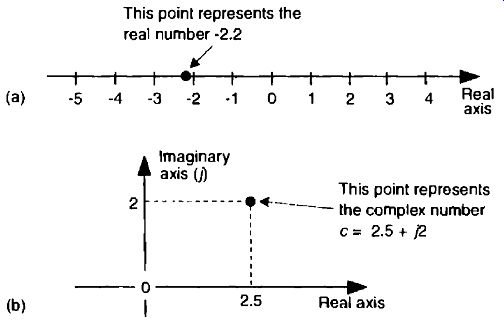
FIG. 1 Graphical interpretations: (a) a real number; (b) a complex
number.
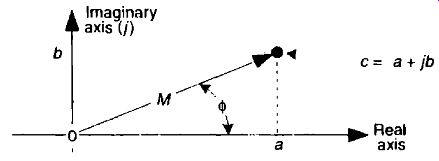
FIG. 2 The phasor representation of complex number c = a + jb on the
complex plane.
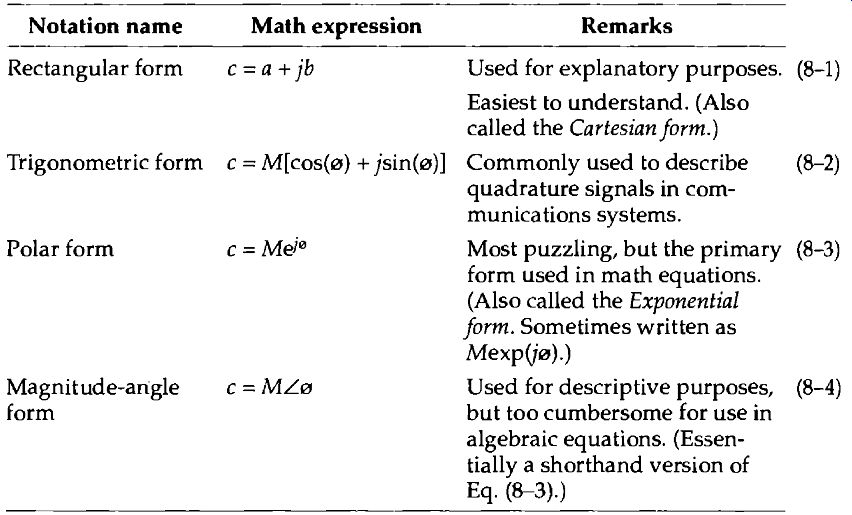
Table 1---Complex Number Notation
We'll use a geometric viewpoint to help us understand some of the arithmetic of complex numbers. Taking a look at FIG. 2, we can use the trigonometry of right triangles to define several different ways of representing the complex number c.
Our complex number c is represented in a number of different ways in the literature, such as shown in Table 1.
Eqs. ( 3) and ( 4) remind us that c can also be considered the tip of a phasor on the complex plane, with magnitude M, in the direction of e degrees relative to the positive real axis as shown in FIG. 2. Keep in mind that c is a complex number and the variables a, b, M, and o are all real numbers. The magnitude of c, sometimes called the modulus of c, is:
M= |c| = √a^2 +b^2 (eqn. 5)
The phase angle e, the argument of c, is the arctangent of the ratio of the imaginary part over the real part, or
(eqn. 6)
If we set Eq. (eqn. 3) equal to Eq. (eqn. 2), Me) e = M[cos(e) + jsin(0)1 , we can state what's named in his honor and now called one of Euler's identities as:
e^lj° = cos(e) + jsin(0). (eqn. 7)
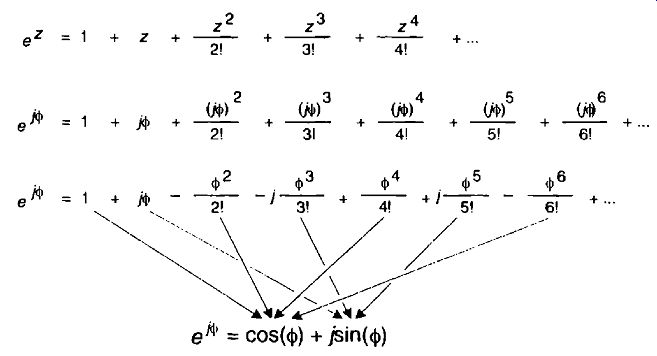
FIG. 3 One derivation of Euler’s equation using series expansions for
e', cos(), and sin (A).
The suspicious reader should now be asking, "Why is it valid to represent a complex number using that strange expression of the base of the natural logarithms, e, raised to an imaginary power?" We can validate Eq. (eqn. 7) as did Europe's wizard of infinite series, Leonhard Euler, by plugging jo in for z in the series expansion definition of ez in the top line of FIG. 3.t
That substitution is shown on the second line. Next we evaluate the higher orders of j to arrive at the series in the third line in the figure. Those of you with elevated math skills like Euler (or who check some math reference book) will recognize that the alternating terms in the third line are the series expansion definitions of the cosine and sine functions.
[Leonhard Euler, born in Switzerland in 1707, is considered by many historians to be the world's greatest mathematician. By the way, the name Euler is pronounced as "oiler."]
FIG. 3 verifies Eq. (eqn. 7) and justifies our representation of a complex number using the Eq. (eqn. 3) polar form: Mel . If we substitute -je for z in the top line of FIG. 3, we end up with a slightly different, and very useful, form of Euler's identity:
e = cos(e) jsin(0).
(eqn. 8)
The polar form of Eqs. (eqn. 7) and (eqn. 8) benefits us because:
• It simplifies mathematical derivations and analysis, turning trigonometric equations into the simple algebra of exponents. Math operations on complex numbers follow exactly the same rules as real numbers.
• It makes adding signals merely the addition of complex numbers (vector addition).
• It's the most concise notation.
• It's indicative of how digital communications system are implemented, and described in the literature.
Here's a quick example of how the polar form of complex numbers can simplify a mathematical analysis. Let's say we wanted to understand the process of multiplying complex number c i = cos(e) + jsin(0) by another complex number, c2 = cos(20) jsin(20), whose angle is the negative of twice C I 'S angle. The product is
c1 c2 = [cos(o) + jsin(o)][cos(2o) - jsin(2o)]
= cos(o)cos(20) + sin(o)sin(20) + j[sin(o)cos(20) - cos(o)sin(20)] (eqn. 9)
Using the trigonometric function product identities, we can write Eq. (eqn. 9) as c 1 c2 = (1/ 2)Ecos(-0) + cos(3o) + cos(-o) cos(30)1
+ j(1 / 2)tsin(30) + sin(-o) sin(30) + sin(-0)1 (eqn. 10)
= cos(-o) + jsin(-o) = cos(o) - jsin(0).
So the c1 c2 product yields the complex conjugate of c1 . That's not too thrilling, but what is interesting is how trivial a polar form c1 c2 product analysis turns out to be. We can complete our polar form analysis in one brief line: C 1 C2
= ejoe-j20 = (eqn. 11)
which is equivalent to Eq. (eqn. 10).
For math analysis, polar form is usually the notation of choice.
Back to quadrature signals. We'll be using Eqs. (eqn. 7) and (eqn. 8) to under stand the nature of time-domain quadrature signals. But first let's take a deep breath and enter the Twilight Zone of the j operator.
You've seen the definition j = Ar-i. before. Stated in words, we say that j represents a number that when multiplied by itself results in a negative one.
Well, this definition causes difficulty for the beginner because we all know that any number multiplied by itself always results in a positive number. (Unfortunately, engineering textbooks often define j and then, with justified haste, swiftly carry on with all the ways the j operator can be used to analyze sinusoidal signals. Readers soon forget about the question: What does j = actually mean?) Well, -F-1 - had been on the mathematical scene for some time, but wasn't taken seriously until it had to be used to solve cubic polynomial equations in the sixteenth century. Mathematicians reluctantly began to accept the abstract concept of without having to visualize it, because its mathematical properties were consistent with the arithmetic of normal real numbers.
It was Euler's equating complex numbers to real sines and cosines, and Gauss' brilliant introduction of the complex plane, that finally legitimized the notion of -Nr=1 to Europe's mathematicians in the eighteenth century. Euler, going beyond the province of real numbers, showed that complex numbers had a clean consistent relationship to the well known real trigonometric functions of sines and cosines. As Einstein showed the equivalence of mass and energy, Euler showed the equivalence of real sines and cosines to complex numbers. Just as modern-day physicists don't know what an electron is but they understand its properties, we'll not worry about what j is and be satisfied with understanding its behavior. We'll treat j not as a number, but as an operation performed on a number, as we do with negation or multiplication.
For our purposes, the j-operator means rotate a complex number by 90" counterclockwise. (For our friends in the UK, counterclockwise means your anti clockwise.) Let's see why.
We'll get comfortable with the complex plane representation of imaginary numbers by examining the mathematical properties of the] = 1/1- 1 - operator as shown in FIG. 4.
Multiplying any number on the real axis by j results in an imaginary product lying on the imaginary axis. The example on the left in FIG. 4 shows that if 4-8 is represented by the dot lying on the positive real axis, multiplying +8 by j results in an imaginary number, +j8, whose position has been rotated 90° counterclockwise (from +8), putting it on the positive imaginary axis. Similarly, multiplying +j8 by j results in another 90" rotation, yielding the -8 lying on the negative real axis because j2 = -1. Multiplying -8 by j results in a further 90° rotation giving the -j8 lying on the negative imaginary axis. Whenever any number represented by a dot is multiplied by j the result is a counterclockwise rotation of 90°. (Conversely, multiplication by -j results in a clockwise rotation of -90° on the complex plane.)
If we let la E/2 in Eq. 7, we can say:
(eqn. 12)
Here's the point to remember. If you have a single complex number, rep resented by a point on the complex plane, multiplying that number by j or by ein/2 will result in a new complex number rotated 90" counterclockwise (CCW) on the complex plane. Don't forget this, as it will be useful as you begin reading the literature of quadrature processing systems!
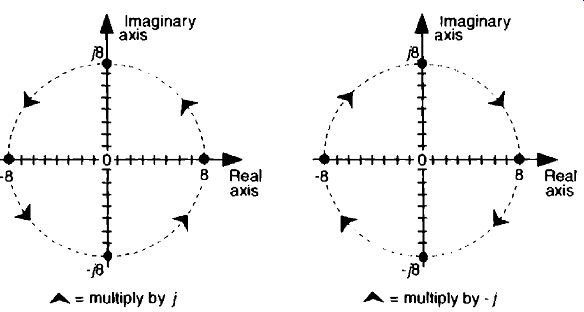
FIG. 4 What happens to the real number 8 when multiplied by j and -j.
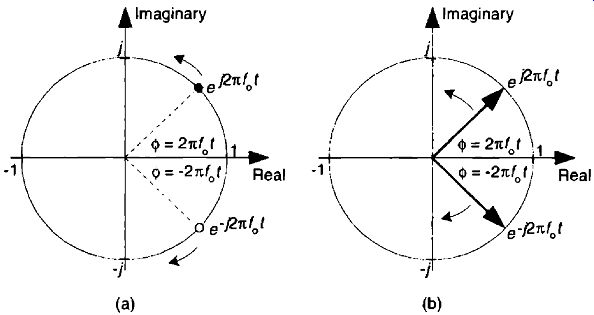
FIG. 5 A snapshot, in time, of two complex numbers whose exponents
change with time: (a) numbers shown as dots; (b) numbers shown as phasors.
Let's pause for a moment here to catch our breath. Don't worry if the ideas of imaginary numbers and the complex plane seem a little mysterious.
It's that way for everyone at first-you'll get comfortable with them the more you use them. (Remember, the j-operator puzzled Europe's heavyweight mathematicians for many years.) Granted, not only is the mathematics of complex numbers a bit strange at first, but the terminology is almost bizarre.
While the term imaginary is an unfortunate one to use, the term complex is downright weird. When first encountered, the phrase complex numbers makes us think complicated numbers. This is regrettable because the concept of complex numbers is not really so complicated. Just know that the purpose of the above mathematical rigmarole was to validate Eqs. (eqn. 2), (eqn. 3), (eqn. 7), and (eqn. 8). Now, let's (finally!) talk about time-domain signals.
[The brilliant American engineer Charles P Steinmetz, who pioneered the use of real and imaginary numbers in electrical circuit analysis in the early twentieth century, refrained from using the term complex numbers-he called them general numbers.]
3. REPRESENTING REAL SIGNALS USING COMPLEX PHASORS
We now turn our attention to a complex number that is a function of time.
Consider a number whose magnitude is one, and whose phase angle in creases with time. That complex number is the e_j2 pi f0 t point shown in FIG. 5(a). (Here the 2 pi f0 term is frequency in radians/second, and it corresponds to a frequency of f0 cycles/second where f , is measured in hertz.) As time t gets larger, the complex number's phase angle increases and our number or- bits the origin of the complex plane in a CCW direction. FIG. 5(a) shows the number, represented by the solid dot, frozen at some arbitrary instant in time. lf, say, the frequency fu = 2 Hz, then the dot would rotate around the circle two times per second. We can also think of another complex number e • 'Info' (the white dot) orbiting in a clockwise direction because its phase angle gets more negative as time increases.
Let's now call our two complex expressions, ei2Nof and c - Pmfol, quadrature signals. They each have both real and imaginary parts, and they are both functions of time. Those ei21. 01 and ej2Efo1 expressions are often called complex exponentials in the literature.
We can also think of those two quadrature signals, ei271o1 and e 1.2q. 01 , as the tips of two phasors rotating in opposite directions, as shown in FIG. 5(b). We're going to stick with this phasor notation for now because it'll allow us to achieve our goal of representing real sinusoids in the context of the complex plane. Don't touch that dial! To ensure that we understand the behavior of a simple quadrature signal, FIG. 6 shows the three-dimensional path of the C 21r1o' signal as time passes. We've added the time axis, coming out of the page, to show how e12nfof follows a corkscrew path spiraling along, and centered about, the time axis.
The real and imaginary parts of e127c101 are shown as the sine and cosine projections in FIG. 6 and gives us additional insight into Eq. 8-7.
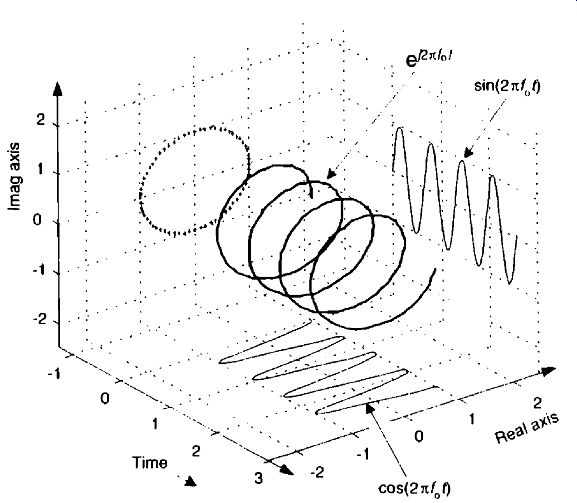
FIG. 6 The motion of the eiPeo' complex signal as time increases.
To appreciate the physical meaning of our discussion here, let's remember that a continuous quadrature signal ei2gfot = cos(2rtf0t) + jsin(27tfa t) is not just mathematical mumbo jumbo. We can generate e12gfot in our laboratory and transmit it to another lab down the hall. All we need is two sinusoidal signal generators, set to the same frequency L. (However, somehow we have to synchronize those two hardware generators so their relative phase shift is fixed at 900.) Next we connect coax cables to the generators' output connectors and run those two cables, labeled cos for the cosine signal and sin for the sinewave signal, to their destination as shown in FIG. 7.
Now for a two-question pop quiz. First question: in the other lab, what would we see on the screen of an oscilloscope if the continuous real cos(2/cfot) and sin(2 pi f0 t) signals were connected to the horizontal and vertical input channels, respectively, of the scope? (Remembering, of course, to set the scope's horizontal sweep control to the External position.) That's right. We'd see the scope's electron beam rotating counterclockwise around in a circle on the scope's screen.
Next, what would be seen on the scope's display if the cables were mis labeled and the two signals were inadvertently swapped? We'd see another circle, but this time it would be orbiting in a clockwise direction. This would be a neat little real-world demonstration if we set the signal generators' f0 frequencies to, say, 1 Hz.
This oscilloscope example is meaningful and helps us answer the important question, "When we work with quadrature signals, how is the j-operator implemented in hardware?" The j-operator is implemented by how we treat the two signals relative to each other. We have to treat them orthogonally such that the real cos(2nf0t) signal represents an east-west value, and the real sin(2itf0 t) signal represents an orthogonal north-south value. (By orthogonal, I mean the north-south direction is oriented exactly 90° relative to the east-west direction.) So in our oscilloscope example the j-operator is implemented merely by how the connections are made to the scope. The real cosine signal controls horizontal deflection and the real sine signal controls vertical deflection. The result is a two-dimensional quadrature signal represented by the instantaneous position of the dot on the scope's display. Our FIG. 7 example reminds us of an important characteristic of quadrature signals:

FIG. 7 Displaying a quadrature signal using an oscilloscope.
... while real signals can be transmitted over a single cable, two cables are al ways necessary to transmit a quadrature (complex) signal.
Returning to FIG. 5(b), ask yourself: "What's the vector sum of those two phasors as they rotate in opposite directions?" Think about this for a moment. That's right, the phasors' real parts will always add constructively, and their imaginary parts will always cancel. This means the summation of these ei2Triot and e - /2 W phasors will always be a purely real number. Implementations of modern-day digital communications systems are based on this property! To emphasize the importance of the real sum of these two complex sinusoids we'll draw yet another picture. Consider the waveform in the three dimensional FIG. 8 generated by the sum of two half-magnitude complex phasors, ei2r-fol /2 and e -i2 71- 01 /2, rotating in opposite directions about, and moving down along, the time axis.
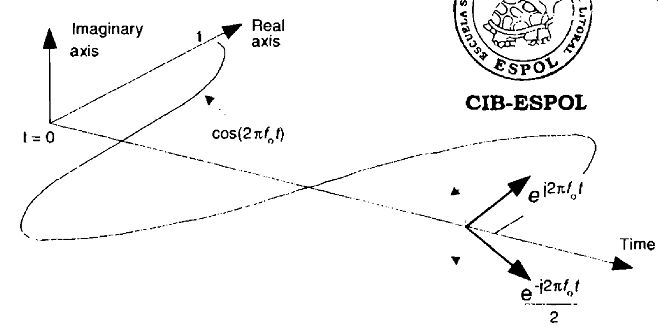
FIG. 8 A cosine represented by the sum of two rotating complex phasors.
Thinking about these phasors, it's clear now why the cosine wave can be equated to the sum of two complex exponentials by:
j2nfo t e -j270- 0 / e j270. , +e -j2nfo t cos(2rEfot) = e 2 2 2
Eq. (eqn. 13), a well known and important expression, is also called one of Euler's identities. We could have derived this identity by solving Eqs. (eqn. 7) and (eqn. 8) for jsin(0), equating those two expressions, and solving that final equation for cos(0). Similarly, we could go through the same algebra exercise and show a real sinewave as also the sum of two complex exponentials as (eqn. 14).
12njo i e - j2nfo t sin(2nf ) t) c (eqn. 14)
Look at Eqs. (eqn. 13) and (eqn. 14) carefully-they are the standard expressions for a cosine wave and a sinewave, using complex notation, and are seen throughout the literature of quadrature communications systems. To keep the reader's mind from spinning like those complex phasors, please realize that the sole purpose of Figures 5 through 8 is to validate the complex expressions of the cosine and sinewave given in Eqs. (eqn. 13) and (eqn. 14). Those two equations, along with Eqs. (eqn. 7) and (eqn. 8), are the Rosetta Stone of quadrature signal processing. We can now easily translate, back and forth, between real sinusoids and complex exponentials.
Let's step back now and remind ourselves what we're doing. We are learning how real signals that can be transmitted down a coax cable, or digitized and stored in a computer's memory, can be represented in complex number notation. Yes, the constituent parts of a complex number are each real, but we're treating those parts in a special way-we're treating them in quadrature.
[The Rosetta stone was a basalt slab found in Egypt in 1799. It had the same text written in three languages, two of them being Greek and Egyptian hieroglyphs. This enabled scholars to, finally, translate the ancient hieroglyphs.]
4. A FEW THOUGHTS ON NEGATIVE FREQUENCY
It's important for us to be comfortable with the concept of negative frequency because it's essential in understanding the spectral replication effects of periodic sampling, discrete Fourier transforms, and the various quadrature signal processing techniques discussed in Section 9. The convention of negative frequency serves as both a consistent and powerful mathematical tool in our analysis of signals. In fact, the use of negative frequency is mandatory when we represent real signals, such as a sine or cosine wave, in complex notation.
The difficulty in grasping the idea of negative frequency may be, for some, similar to the consternation felt in the parlors of mathematicians in the Middle Ages when they first encountered negative numbers. Until the thirteenth century, negative numbers were considered fictitious because numbers were normally used for counting and measuring. So up to that time, negative numbers just didn't make sense. In those days, it was valid to ask, "How can you hold in your hand something that is less than nothing?" The idea of subtracting six from four must have seemed meaningless. Math historians suggest that negative numbers were first analyzed in Italy. As the story goes, around the year 1200 the Italian mathematician Leonardo da Pisa (known as Fibonacci) was working on a financial problem whose only valid solution involved a negative number. Undaunted, Leo wrote, "This problem, I have shown to be insoluble unless it is conceded that the first man had a debt."
Thus negative numbers arrived on the mathematics scene, never again to be disregarded.
Modern men arid women can now appreciate that negative numbers have a direction associated with them. The direction is backward from zero in the context that positive numbers point forward from zero. For example, negative numbers can represent temperatures measured in degrees below zero, minutes before the present if the present is considered as zero time, or money we owe the tax collector when our income is considered positive dollars. So, the notion of negative quantities is perfectly valid if we just define it properly.
As comfortable as we now are with negative numbers, negative frequency re mains a troublesome and controversial concept for many engineers. This author once encountered a paper in a technical journal which stated: "since negative frequencies cannot exist--." Well, like negative numbers, negative frequency is a perfectly valid concept as long as we define it properly relative to what we're used to thinking of as positive frequency. With this thought in mind, we'll call FIG. 5's e12T 1of signal a positive -frequency complex exponential because it rotates around the complex plane's origin in a circle in a positive-angle direction at a cyclic frequency off() cycles per second. Likewise, we'll refer to the e -P'fot signal as a negative-frequency complex exponential be cause of its negative-angle direction of rotation.
So we've defined negative frequency in the frequency domain. If my DSP pals want to claim negative frequency doesn't exist in the time domain, I won't argue. However, our frequency-domain negative frequency definition is clean, consistent with real signals, very useful, and here to stay.
5. QUADRATURE SIGNALS IN THE FREQUENCY DOMAIN
Now that we know much about the time-domain nature of quadrature signals, we're ready to look at their frequency-domain descriptions. We'll illustrate the full three-dimensional aspects of the frequency domain so none of the phase relationships of our quadrature signals will be hidden from view.
FIG. 9 tells us the rules for representing complex exponentials in the frequency domain.
We'll represent a single complex exponential as a narrow impulse located at the frequency specified in the exponent. In addition, we'll show the phase relationships between those complex exponentials along the real and imaginary frequency-domain axes. To illustrate those phase relationships, a complex frequency domain representation is necessary. With all this said, take a look at FIG. 10.
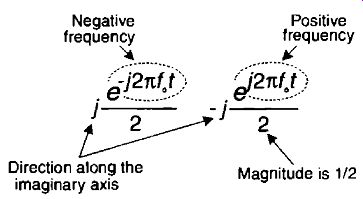
FIG. 9 Frequency-domain interpretation of complex exponentials.
See how a real cosine wave and a real sinewave are depicted in our complex frequency domain representation on the right side of FIG. 10.
Those bold arrows on the right of FIG. 10 are not rotating phasors, but are frequency-domain impulse symbols indicating a single spectral line for a single complex exponential such as ei2V- 01 . The directions in which the spectral impulses are pointing merely indicate the relative phases of the spectral components. The amplitude of those spectral impulses are 1/2. Notice how the spectrum of cos(27Efo t) is real-only. That's because cos(2 pi f0 t) is an even function in time, its value at negative time t is equal to its value at positive time t, or:
cos[2 pi f0 (-t)] = cos(2 pi f0 t). (eqn. 15)
The sin(2 pi f0 t) function, on the other hand, has an imaginary--only spectrum because it's an odd function. An odd function's value at negative time t is equal to the negative of its value at positive time t, or:
sin[2 pi f0 (-t) = -sin(2 pi f0 t). (eqn. 16)

FIG. 10---Complex time and frequency domain representations: (a) cosine
wave; (b) a sinewave.
Why are we bothering with this 3-dimensional frequency-domain representation? Because it's the tool we'll use to understand the generation (modulation) and detection (demodulation) of quadrature signals in digital (and some analog) communications systems, and that's one of the goals of this section. Before we go there, however, let's validate this frequency-domain representation with a little example.
FIG. 11 is a straightforward example of how we use the complex frequency domain. There we begin with a real sinewave, multiply it by j, and then add it to a real cosine wave of the same frequency. The result is the single complex exponential ei27( f, , illustrating graphically Euler's identity that we stated mathematically in Eq. (eqn. 7). On the frequency axis, the notion of negative frequency is seen as those spectral impulses located at -27(f ) radians/sec on the frequency axis. This figure shows the big payoff: when we use complex notation, generic complex exponentials like ei2rE fi and (027ft are the fundamental constituents of the real sinusoids sin(2 pi ft) or cos(2rcji). That's because both sin(2 pi ft) and cos(2 pi ft) are made up of At li and e• 121`f I components. If you were to take the discrete Fourier transform (DFT) of discrete time-domain samples of a sin(2nf0t) sinewave, a cos(2.7tfot) cosine wave, or a e12.71 01 complex sinusoid and plot the complex results, you'd get exactly the narrow frequency-domain impulses in FIG. 11.
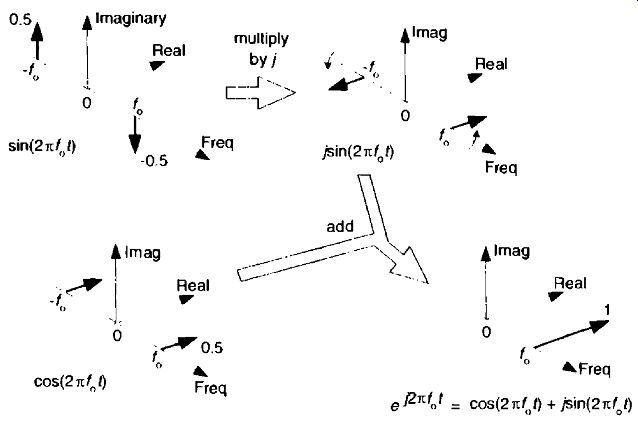
FIG. 11 Complex frequency-domain view of Euler's: e^fof = cos(2 pi f0 t)
+ j sin(2 pi f0 t).
If you understand the notation and operations in FIG. 11, pat your self on the back, because you now know a great deal about the nature and mathematics of quadrature signals.
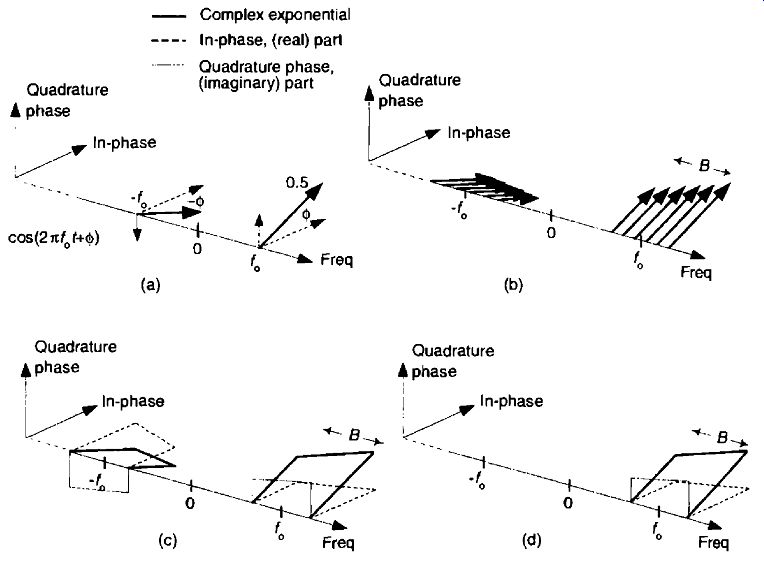
FIG. 12 Quadrature representation of signals: (a) real sinusoid cos(afo
t + 0); (b) real bandpass signal containing six sinusoids over bandwidth
a (c) real bandpass signal containing an infinite number of sinusoids over
bandwidth B Hz; (d) complex bandpass signal of bandwidth E3 Hz.
6. BANDPASS QUADRATURE SIGNALS IN THE FREQUENCY DOMAIN
In quadrature processing, by convention, the real part of the spectrum is called the in-phase component and the imaginary part of the spectrum is called the quadrature component. The signals whose complex spectra are in FIG. 12(a), (b), and (c) are real, and in the time domain they can be represented by amplitude values having nonzero real parts and zero-valued imaginary parts. We're not forced to use complex notation to represent them in the time domain-the signals are real only.
Real signals always have positive and negative frequency spectral components. For any real signal, the positive and negative frequency components of its in-phase (real) spectrum always have even symmetry around the zero frequency point. That is, the in-phase part's positive and negative frequency components are mirror images of each other. Conversely, the positive and negative frequency components of its quadrature (imaginary) spectrum are always negatives of each other. This means that the phase angle of any given positive quadrature frequency component is the negative of the phase angle of the corresponding quadrature negative frequency component as shown by the thin solid arrows in FIG. 12(a). This conjugate symmetry is the invariant nature of real signals, and is obvious when their spectra are represented using complex notation.
A complex-valued time signal, whose spectrum can be that in FIG. 12(d), is not restricted to the above spectral conjugate symmetry conditions.
We'll call that special complex signal an analytic signal, signifying that it has no negative-frequency spectral components.
Let's remind ourselves again: those bold arrows in FIG. 12(a) and (b) are not rotating phasors. They're frequency-domain impulses indicating a single complex exponential ej2311 . The directions in which the impulses are pointing show the relative phases of the spectral components.
There's an important principle to keep in mind before we continue. Multi plying a time signal by the complex exponential ej21cf(1 1 , what we call quadrature mixing (also called complex mixing) shifts a signal's spectrum upward in frequency by f() Hz, as shown in FIG. 13(a) and (b). Likewise, multiplying a time signal by c -i2 Trfo' (also called complex down-conversion or mixing to baseband) shifts a signal's spectrum down to a center frequency of zero Hz as shown in FIG. 13(c). The process of quadrature mixing is used in many DS1' applications as well as most modern-day digital communications systems.
Our entire quadrature signals discussion, thus far, has been based on continuous signals, but the principles described here apply equally well to discrete-time signals. Let's look at the effect of complex down-conversion o discrete signal's spectrum.

FIG. 13 Quadrature mixing of a bandpass signal: (a) spectrum of a complex
signal x(t); (b) spectrum of x(t)er2r1 o l; (c) spectrum of x(f)e
7. COMPLEX DOWN-CONVERSION
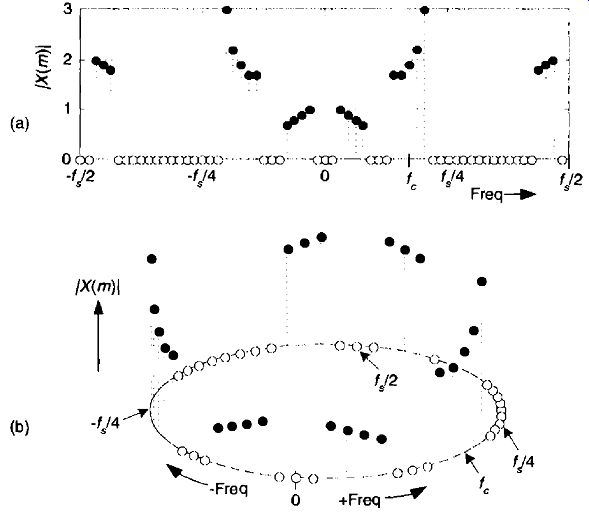
FIG. 14 Discrete X(m) spectra of a real-valued time sequence: (a) traditional
depiction; (b) circular frequency axis depiction.
Complex down-conversion of discrete signal is a straightforward process, and best described by an example. Think of a real-valued discrete sequence x(n) having an I X(m) I spectral magnitude whose non-zero-valued samples are shown as the solid dots in FIG. 14(a). Because of the periodicity of discrete spectral representations we discussed in Sections 2.1 and 3.17 (as well as the frequency axis of the FFT lying on the unit circle in the z-plane explained in Section 6.3), we're justified in also representing the I X(m) I spectrum as the three-dimensional circular plot given in FIG. 14(b). There we've wrapped the linear frequency axis of FIG. 14(a) around a circle whose perimeter length is equal to the sample rate fs such that the frequencies 4/2 and -4/2 are the same point on the circular axis.
With x(n) being an N-point real sequence, I X(m) I 's spectrum is symmetrical about the zero-frequency point. If we now perform complex down conversion (by multiplying x(n) by Ci2qcnis, where t s = 1/f„ using either equivalent scheme shown in FIG. 15(a)), the result is the complex sequence x(n) = i(n) + jci(n) whose spectrum is given in FIG. 15(b). The minus sign in the exponent of e i21 Jots shifts the I X(m) I spectrum 4. Hz in the negative-frequency direction. Of course, because x(n) is complex, there's no symmetry about the zero-frequency point in I X(m) I. The circular depiction of I X(m) I is provided in FIG. 15(c). The i(n) and q(n) parts of sequence Mil) are said to be orthogonal, meaning they are independent of, and do not affect, each other and the following condition holds:
(eqn. 17)
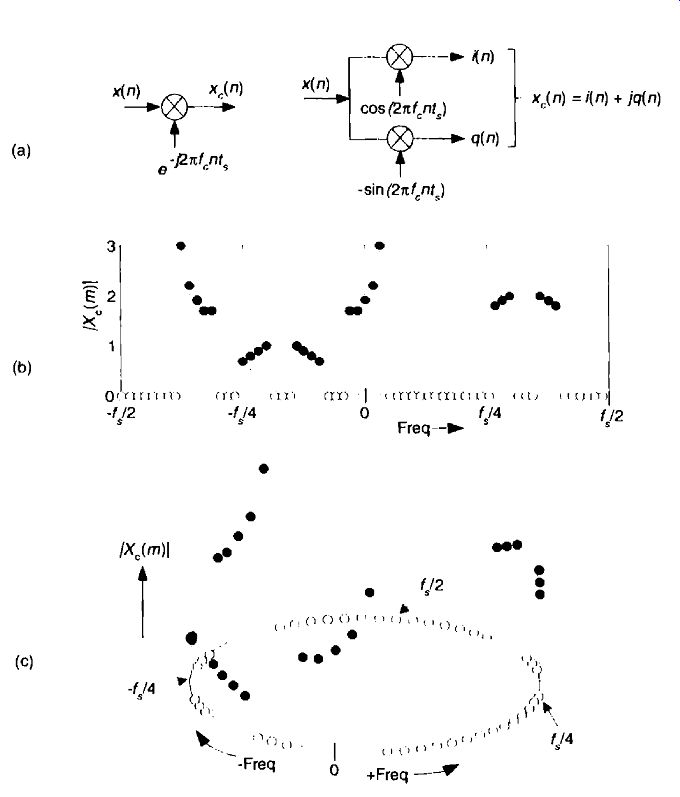
FIG. 15 Discrete I X(m) I spectra of a down-converted time sequence:
(a) down-conversion symbols: (b) traditional frequency axis depiction; (c)
circular frequency axis depiction.
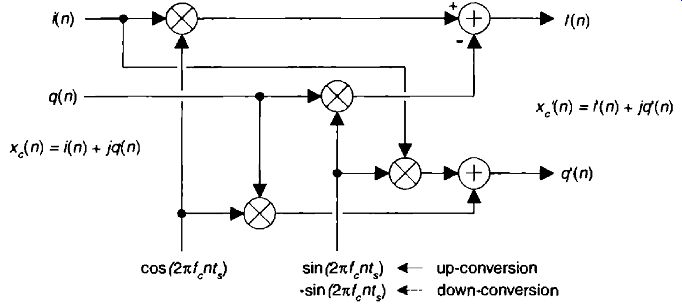
FIG. 16 Complex multiplier used for up/down-conversion.
The purpose of the Figures 8-14 and 8-15 is to show how frequency translation by means of complex down-conversion causes spectral components to wrap around the fs /2 point.
FIG. 15(a) showed the method of down-converting a real x(n) time sequence. For completeness, FIG. 16 shows how translating a complex time sequence x(n) = i(n) + jq(n) up or down byf, Hz requires a complex multiplier.
This complex multiplier computes i'(n) + jq'(n) = x,(n)e±i24crus = [i(n) + jq(n)i[cos(2714nts ) ± jsin(27cfcnts )] (eqn. 18)
If you use this multiplier, don't forget the minus sign at the top adder in FIG. 16. (It's an easy mistake to make. Believe me.)
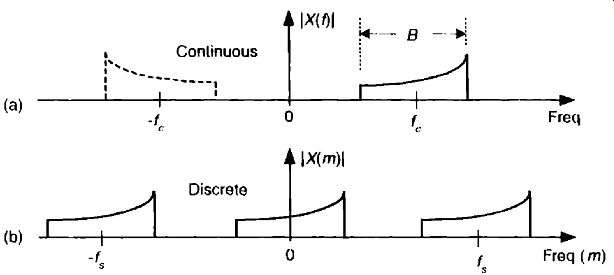
FIG. 17 The "before and after" spectra of a quadrature-sampled
signal.
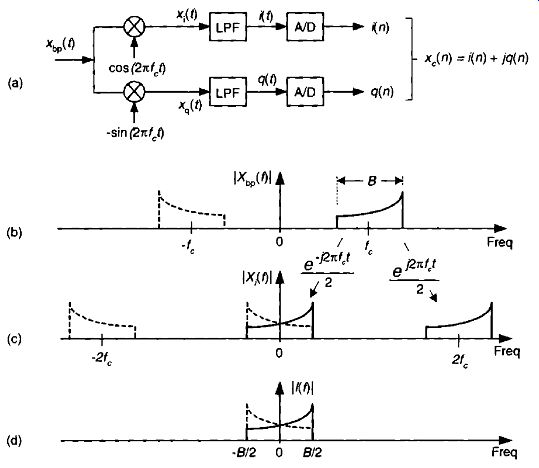
FIG. 18 Quadrature-sampling: (a) block diagram; (b) input spectrum;
(c) in phase mixer output spectrum; (d) in-phase filter output spectrum.
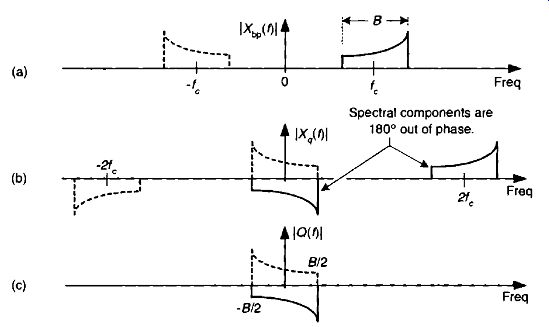
FIG. 19 Spectra within the quadrature phase (lower) signal path of
the block diagram.
8. A COMPLEX DOWN-CONVERSION EXAMPLE
We can use all we've learned so far about quadrature signals by exploring the process of quadrature-sampling. Quadrature sampling is the process of digitizing a continuous (analog) bandpass signal and down-converting its spectrum to be centered at zero Hz. Let's see how this popular process works by thinking of a continuous bandpass signal, of bandwidth B, centered about a carrier frequency off, Hz as shown in FIG. 17(a). Our goal in quadrature sampling is to obtain a digitized version of the analog bandpass signal, but we want the digitized signal's discrete spectrum centered about zero Hz, not fc Hz as in FIG. 17(b). That is, we want to mix a time signal with CRIc fc t to perform complex down-conversion. The frequency L is the digitizer's sampling rate in samples/second. We show replicated spectra in FIG. 17(b) to remind ourselves of this effect when A /D conversion takes place.
We can solve our sampling problem with the quadrature-sampling block diagram (also known as I/Q demodulation) shown in FIG. 18(a). That arrangement of two sinusoidal oscillators, with their relative 90" phase, is often called a quadrature oscillator. First we'll investigate the in-phase (upper) path of the quadrature sampler. With the input analog xbp(t)'s spectrum shown in FIG. 18(b), the spectral output of the top mixer is provided in FIG. 18(c). Those e121 ' and (021( frt terms in FIG. 18 remind us, from Eq. (eqn. 13), that the constituent complex exponentials comprise a real cosine duplicate and translate each part of I Xbp (f) I 's spectrum to produce the I Xi (f) I spectrum. There is a magnitude loss of a factor of 2 in I X i (f) I, but we're not concerned about that at this point. FIG. 18(d) shows the output of the lowpass filter (LIT) in the in-phase path.
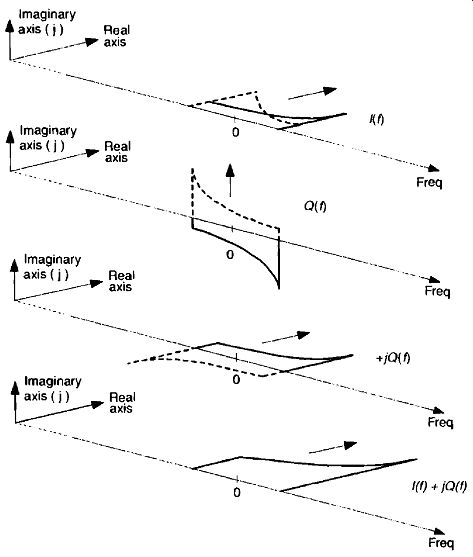
FIG. 20 Three-dimensional view of combining the l(f) and Q(f) spectra
to obtain the l(f) -Fp(f) spectra.
Likewise, FIG. 19 shows how we get the filtered continuous quadrature phase portion (bottom path) of our desired complex signal by mixing xbp (t) with -sin(2/tfe t). From Eq. (eqn. 14) we know that the complex exponentials comprising the real -sin(270) sinewave are ej2nfil and -c •i2nfel. The minus sign in the -e Pftful term accounts for the down-converted spectra in I X VP being 180° out of phase with the up-converted spectra.
This depiction of quadrature sampling can he enhanced if we look at the situation from a three-dimensional standpoint, as in FIG. 20. There the +j factor rotates the "imaginary-only" Q(f) by 90", making it "real-only." This /QV) is then added to AD to yield the spectrum of a complex continuous signal x(t) = i(t) + jq(t). Applying this signal to two A/D converters gives our final desired discrete time samples of x(n) = i(n) jq(n) in FIG. 18(a) having the spectrum shown in FIG. 17(b). Some advantages of this quadrature-sampling scheme are:
• Each A/D converter operates at half the sampling rate of standard real signal sampling.
• In many hardware implementations, operating at lower clock rates saves power.
• For a given f, sampling rate, we can capture wider band analog signals.
• Quadrature sequences make FFT processing more efficient due to a wider frequency range coverage.
• Quadrature sampling also makes it easier to measure the instantaneous magnitude and phase of a signal during demodulation.
• Knowing the instantaneous phase of signals enables coherent processing.
While the quadrature sampler in FIG. 18(a) performed complex down-conversion, it's easy to implement complex up-conversion by merely conjugating the x(n) sequence, effectively inverting x,(n)'s spectrum about zero Hz, as shown in FIG. 21.

FIG. 21 Using conjugation to control spectral orientation.

FIG. 22 Quadrature sampling with digital mixing method.
9. AN ALTERNATE DOWN-CONVERSION METHOD
The quadrature sampling method of complex down-conversion in FIG. 18(a) works perfectly on paper, but it's difficult to maintain the necessary exact 900 phase relationships with high frequency, or wideband, signals in practice. One- or two-degree phase errors are common in the laboratory. Ide ally, we'd need perfectly phase-matched coax cables, two oscillators exactly 90" out of phase, two ideal mixers with identical behavior and no DC output component, two analog lowpass filters with identical magnitude and phase characteristics, and two A/D converters with exactly identical performance.
(Sadly, no such electronic components are available to us.) Fortunately, there's an easier-to-implement quadrature sampling method [5]. Consider the process shown in FIG. 22, where the analog xbp(t) signal is initially digitized with the follow-on mixing and filtering being per formed digitally. This quadrature sampling with digital mixing method mitigates the problems with the FIG. 18(a) quadrature sampling method and eliminates one of the A/D converters.
We use FIG. 23 to show the spectra of the in-phase path of this quadrature sampling with digital mixing process. Notice the similarity between the continuous 11( DI in FIG. 18(d) and the discrete 1 1(m) in FIG. 23(d). A sweet feature of this process is that with f = 4 / 4 , the cosine and sine oscillator outputs are the repetitive four-element cos(nn/2) = 1,0,-1,0, and -sin(nn/2) = 0,-1,0,1, sequences, respectively. (See Section 13.1 for details of these special mixing sequences.) No actual mixers (or multiplies) are needed to down-convert our desired spectra to zero Hz! After lowpass filtering, the i(n) and q(n) sequences are typically decimated by a factor of two to reduce the data rate for following processing. (Decimation is a topic covered in Section 10.1.)
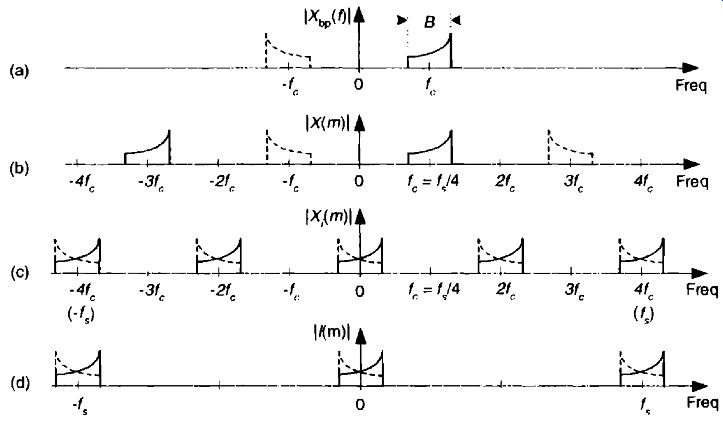
FIG. 23 Spectra of quadrature sampling with digital mixing within the
in phase (upper) signal path.
With all its advantages, you should have noticed one drawback of this quadrature sampling with digital mixing process: the f, sampling rate must be four times the signal's fc. center frequency. In practice, 4f, could be an unpleasantly high value. Happily, we can take advantage of the effects of bandpass sampling to reduce our sample rate. Here's an example: consider a real analog signal whose center frequency is 50 MHz, as shown in FIG. 24(a). Rather than sampling this signal at 200 MHz, we perform bandpass sampling, and use Eq. (2-13) with niood = 5 to set the f, sampling rate at 40 MHz.
This forces one of the replicated spectra of the sampled I X(m) I to be centered at f,/4, as shown in FIG. 24(b), which is what we wanted. The A/D converter x(n) output is now ready for complex down-conversion by h/4 (10 MHz) and digital lowpass filtering.
Section 13.1 provides a clever trick for reducing the computational workload of the lowpass filters in FIG. 22, when this h/4 down-conversion method is used with decimation by two.
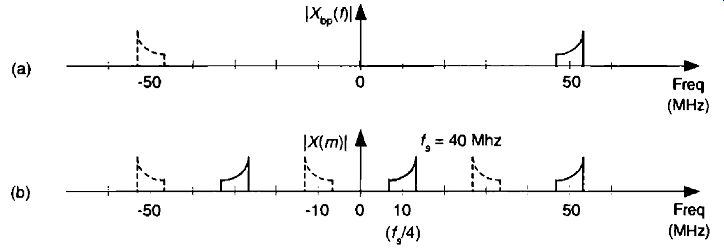
FIG. 24 Bandpass sampling effects used to reduce the sampling rate
of quadrature sampling with digital mixing: (a) analog input signal spectrum;
(b) A/D converter spectrum.
REFERENCES
[1] Struik, D. A Concise History of Mathematics, Dover Publications, New York, 1967.
[2] Bergamini, D. Mathematics, Life Science Library, Time Inc., New York, 1963.
[3] Lewis, L. J., et al. Linear Systems Analysis, McGraw-Hill Inc., New York, 1969, p. 193.
[4] Schwartz, M. Information, Transmission, Modulation, and Noise, McGraw-Hill Inc., New York, 1970, p. 35.
[5] Considine, V. "Digital Complex Sampling," Electronics Letters, 19, August 4, 1983.
PREV. | NEXT
Related Articles -- Top of Page -- Home